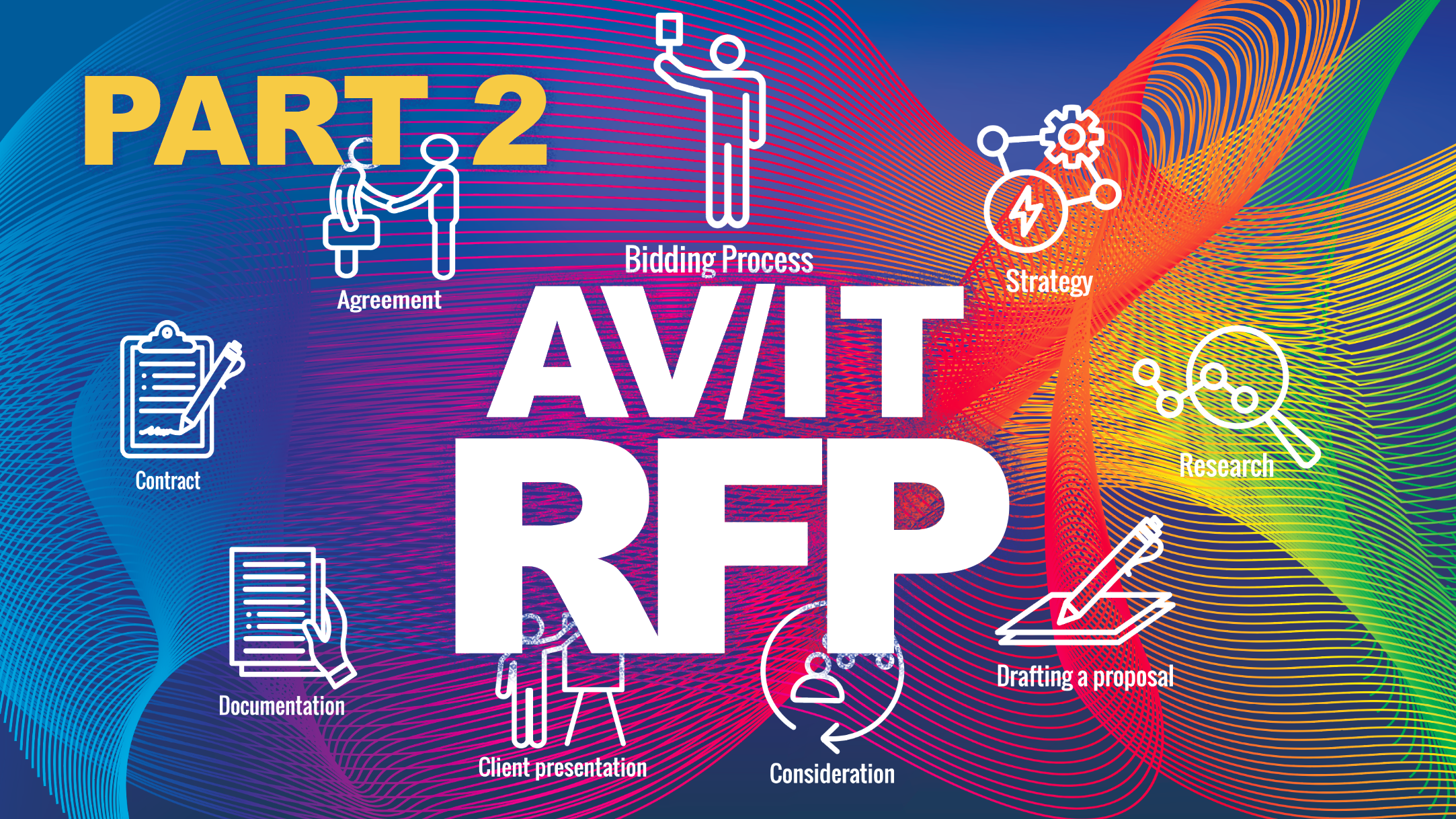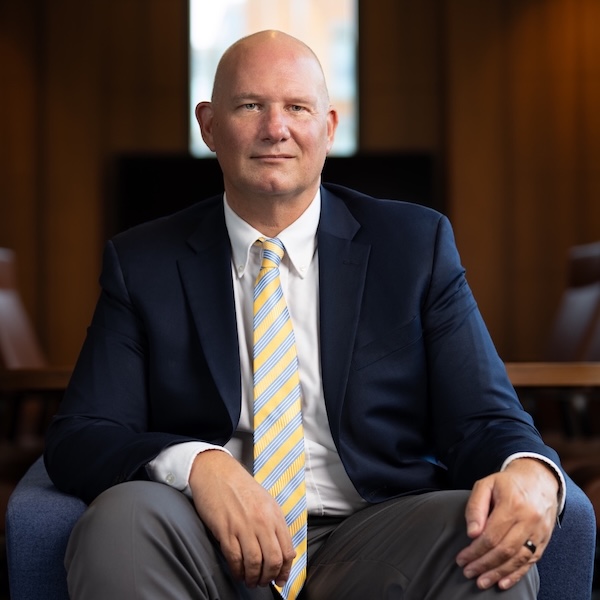AV Technology presents the five-part series of articles on Navigating a Successful Higher Ed AV/IT RFP Process, written by Joe Way, PhD, CTS, executive director of Digital Spaces at the University of California, Los Angeles’ Digital & Technology Services.
Are you currently creating an AV/IT Request for Proposals (RFP)? If so, start here!
Based on recent and past personal experience, Joe Way chronicles the step-by-step process of creating, executing, and implementing the AV/IT RFP.
Way said, “Institutions should view it [the RFP] as an opportunity to articulate their vision with clarity, while vendors should approach it as a chance to demonstrate alignment with that vision. The most successful outcomes happen when the RFP becomes a bridge that translates institutional goals into practical requirements, allowing bidders to respond with solutions that go beyond the minimum spec sheet.”
All five parts will be published within one week. Come back here to view the next one.
To introduce the article series, AV Technology’s Cindy Davis chatted with Joe Way and asked him about best practices and if there were any surprises while creating and implementing the AV/IT RFP. Check out the interview below.
Start with Data, Not Assumptions
In higher ed, projects are commonly awarded in one of two ways: (1) an approved proposal for a group of rooms or buildings that fall on an annual refresh cycle [e.g., 15% of rooms each year, on a five–seven-year refresh]; or (2) as part of a capital improvement project like a new building construction. Once awarded, too often there is an impulse to jump straight to designing the solution to either fit the “campus standard,” value engineer to the approved budget, or finally integrate that new technology. While all three inclinations are valid, a proper data-informed RFP process can achieve all three simultaneously.
There is no way to know if the final result is a success without knowing where you started. The why is the most important place to start. What data do you have to justify the reason for the project itself? Just saying the technology is outdated or always breaks is not sufficient. Where’s the data to demonstrate that the status quo is actually ineffective at achieving the goals of the institution?
For example, part of my role in coming to UCLA was to help execute a new campus audiovisual standard. How did we know that the spaces even needed a redesign, other than our observations or support frustrations? Leveraging objective third-party metrics is key. After using the EDUCAUSE Learning Space Rating System (LSRS) to audit the general assignment classrooms, the results revealed an average space score of 11 points out of a possible 72. With the last major investment being made back in 2006, nearly two decades ago—with some spaces as old as 1996—the score was indicative of our assumptions. A follow-up subjective survey of the faculty who use the spaces further validated the LSRS score. The data told the story. The data confirmed suppositions. The data became the case for the proposal.
Develop a Strategic Vision Built on Consensus
Building a strategic vision begins with bringing together the diverse expertise of all stakeholders, each with influence over those the project impacts, whether it be IT, facilities, teaching-and-learning, registrar, administration, construction management, academic senate, academic technologies, finance, public safety, etc. Each possesses a vital perspective on what a modern learning environment can be, as well as serving as a champion for a successful outcome. Working in silos is no longer a valid modus operandi in a modern campus environment. If our changes impact others, they must be part of the solution. Faculty bring insight into pedagogy, IT staff understand the technical backbone, facilities teams know infrastructure limitations, and administrators connect projects to institutional priorities. When these voices are brought together early, the result is a shared foundation that transcends individual agendas. Consensus at this stage ensures that the vision is not just aspirational, but achievable and anchored in the real needs of the institution. It creates a unified voice.
Consensus also helps establish clarity around priorities. Without it, projects risk being driven by the loudest voice in the room or by short-term pressures rather than long-term goals. A facilitated process that gathers feedback, aligns values, and identifies non-negotiables creates transparency and builds trust across the organization. Instead of being seen as “just another project,” the modernization effort becomes a mission-driven initiative that reflects the collective commitment of the community. This shift in ownership turns passive stakeholders into active partners.
Finally, a vision built on consensus provides resilience. Every major project will encounter challenges, whether it be budget constraints, timeline delays, or shifting leadership priorities. Yet, when the vision has broad agreement, it is more likely to withstand those pressures. Consensus transforms the vision into a contract of shared responsibility: faculty champion adoption, IT ensures technical integrity, facilities manage sustainability, and administrators advocate for funding. The strength of that alignment not only makes the RFP process more effective but also increases the likelihood that the final outcome will deliver lasting impact, aligned with institutional priorities.
When it comes to the RFP process itself, consensus is what ensures the document speaks with one voice. Too often, RFPs read like a patchwork of disconnected requirements gathered from different departments without a cohesive strategy. Vendors can spot this immediately, and it usually results in generic, lowest-common-denominator responses. By contrast, an RFP shaped by consensus reflects a unified vision, with clear priorities and purposeful criteria. This makes it easier for bidders to tailor their solutions and demonstrate true alignment with institutional goals.
Consensus also helps protect against pitfalls in the evaluation stage. When stakeholders have agreed in advance on what success looks like, it prevents the process from being derailed by competing agendas or subjective preferences. Instead of endless debates about features or price points, the evaluation can focus on how well each proposal fulfills the shared vision. This not only speeds up decision-making but also improves confidence in the outcome for both the institution and the vendor because the project is anchored in a foundation of collective ownership and long-term strategy.
Order of Operations
Traditionally, a bid process would include sending out or inviting a set number of audiovisual integrators to submit their best pricing for a certain design, whether they design it themselves or ask you for particular products or standards. This often leads to two negative situations: (1) a “low bid” winner that doesn’t actually design for the totality of the solution—because to be honest, there are some institutions that only select the lowest bid and not best value; or (2) design solutions that are too difficult to parse an apples-for-apples bid on. Therefore, I suggest adopting an AV order-of-operations with a two-phased bid process: first, the solution, then the integrator and/or procurement partner. This will take longer to get through the RFP process itself, but speed up the deliverables in later stages of the project.
Even if the institution has a “campus standard” ecosystem, every RFP process should be viewed as an opportunity to reevaluate current practices, while being open to identifying new innovations. The AV technologies are evolving at a faster pace than ever before, especially in the education space, as UC, SaaS, and cloud services become more integrated into the teaching-and-learning experience. To ensure innovation is a priority, identify the products first, before selecting who will install it or it’s procured though. The fact is, all integrators have “preferred” partners with higher rebates and kickbacks, which means not all pricing will be equivalent, and not all design services are as neutral as claimed. Understandably, integrators need to earn a profit; they should and do design systems and create bids based on both profitability and manufacturer relationships they have agreements with.
This may be controversial, but I also propose that end users pre-negotiate unit pricing directly through the manufacturer. Selecting the products first allows the institution to create a bill-of-materials (BOM) ahead of time, so the manufacturer can plan deliverable timelines as well as provide the lowest pricing possible. In turn, by knowing the base costs of each item prior to running the integrator portion of the RFP, the implementation partner bids are more apples-for-apples. The markup is easier to identify when the base cost is known in advance, and it offers an additional checkpoint for staying on budget.
The second phase RFP process shifts focus from product evaluation to selecting the implementation partner. Once the technology standards and equipment have been identified in the first phase, the institution can then release a separate RFP specifically for integration and deployment. This approach ensures that vendors are evaluated not on the products themselves, but on their ability to deliver a successful implementation. Depending on whether the institution has an in-house installation team and/or relies on third-party integrators, it will decide whether it is a full-stack bid or a box-sale bid only. Criteria such as project management expertise, installation quality, training, commissioning, fiscal ability, team qualifications, and ongoing support become the differentiators. By separating product selection from integration services, institutions gain both pricing transparency and flexibility, while integrators are able to concentrate on demonstrating their value as true partners in execution rather than competing primarily on equipment costs.
Note: The views and opinions expressed in this article are solely those of Josiah Way himself, speaking in his personal capacity as an industry professional. They do not represent the positions, policies, or endorsements of UCLA, UC Regents, HETMA, Higher Ed AV, or any of Josiah Way’s affiliated institutions or organizations. Nothing contained herein should be interpreted as a promise, guarantee, or commitment regarding current or future business relationships, procurement decisions, or bid outcomes. The content provided reflects general industry best practices and professional perspective gained through personal experience only and should not be construed as binding guidance or official policy.

